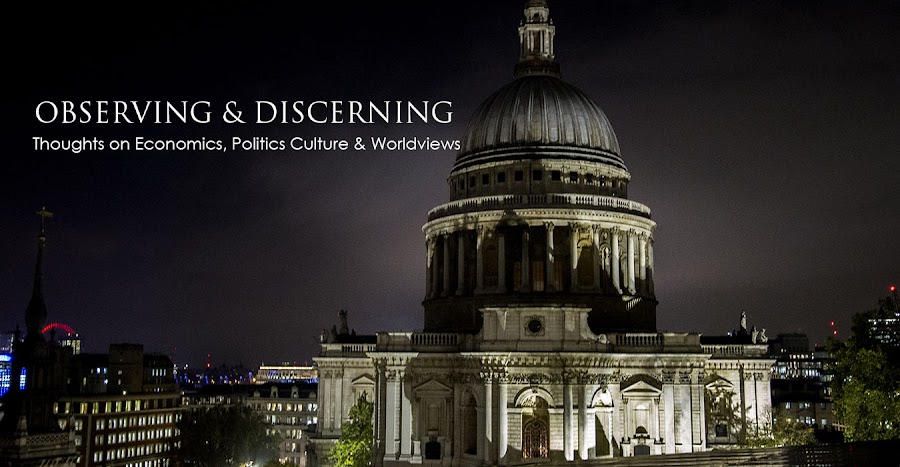I was recently able to view an exhibition of the work of the
artist Madge Gill at the Orleans House Gallery in Twickenham. Ms. Gill, who lived from 1882 till 1962, is
described as a medium and visionary; her artwork in pen, ink and painting was prolific.
She’s held up as one of the premier British exemplars of outsider art, also
known as brute art. This genre has
received great interest and press of late, including a significant seat at this
year’s Venice Biennale, Alan Yentob’s excellent Imagine show of the 19th
of November and the Wellcome Collection’s exhibition earlier in the year. Some of the ‘outsiders’ have mental
disabilities, others emotional health problems and still others, visions or voices.
They’re a myriad of people with ‘issues’ who feel compelled to create
and often their production is prodigious. Carl Jung famously induced hallucinations with drugs and other conscious-changing techniques in order to enter into altered states; his works can be seen in a
collection called The Red Book.
There is much to celebrate about outsider art: not just that
the disabled are able to find purpose, though that in itself is something quite
wonderful, but that the art itself often has the quality of honesty in its
anguish, longing, urgency, obsessiveness, humour, confusion, elation and
sometimes despair. In some esteemed works of contemporary art, we can sometimes find more calculation, more self-consciousness,
more disdain or cynicism – characteristics which have their place as well. It’s just great to see those with an
alternative vision of the world given some attention, and in some cases some
critical recognition. Artists from
Creative Growth in Oakland have been featured on Oxford Street and many others
have been shown by the Museum of Everything here and abroad.
Now to get back to the work of Madge, because she has a
special interest to me. Her works are
best described by one of her biographer’s, Roger Cardinal thus:
Gill’s frenetic improvisations have an almost hallucinatory quality, each surface being filled with checkerboard patterns that suggest giddy, quasi-architectural spaces. Afloat upon these swirling proliferations are the pale faces of discarnate and nameless women, sketched perfunctorily, albeit with an apparent concern for beauty, and with startled expressions. (from Cardinal's The Life of Madge Gill)
Madge Gill had no training nor aspirations to fame as many
of her drawings were produced in secret.
In her letters and diaries she claims to have been inspired by an ethereal
spirit guide called Myrninerest. The focal point of the exhibition at Orleans
House Gallery is her giant scroll – over 10 metres long – called The
Crucifixion of the Soul featuring Gill’s signature doodle-like drawings and
female faces.
Her early years were
difficult as being an ‘illegitimate’ child in Victorian times meant that she
was placed in an orphanage at the age of nine and subsequently shipped off to
Canada to work as a domestic servant on some Ontario farms. She returned to London later and lived with
an aunt who introduced her to spiritualism and mediumistic practices. It was after the still-born birth of her
fourth child and her own illness which cost her an eye that Gill claims she was
first possessed by her spirit guide. She
says that Myrninerest remained in contact with her for the rest of her
life.
In 1926 her son records his mother’s
first experience of delirious trance-states which she apparently found
overwhelming and frightening. The
manifestation of these states was not only drawing and painting, but writing,
knitting, crochet-work, weaving and piano-playing as well. In 1922 Gill was treated in a women’s clinic
in Hove where her work was brought to the attention of the Society for
Psychical Research in London. The expert
opinion at the time judged the drawings to be “more of an inspirational than of
an automatic kind.”
Madge Gill lived with her sons and also a brother-in-law who
was an ardent follower of astrology.
From around 1930 she became known as a medium in her Upton Park
neighbourhood, organised séances at her home, drew up horoscopes and offered
spontaneous prophecies. Her work was
displayed at galleries including the Whitechapel and even turned down the offer
of a show in a prestigious West End one, explaining that her works could not be
sold, since they all belonged to Myrninerest.
It’s believed that in her later years she worked in her bedroom through
the night, viewing her work with her one good eye, succumbing to “a seductive
auto-hypnosis which distracted her from reality.” Some neighbours claimed she had a disturbing
gaze, eccentric remarks and deranged behaviour.
Over 200 of her works are conserved in the Newham municipal archives and
much are preserved in public collections such as the Collection de l’Art Brut
in Lausanne and the Aracine collection in Lille.
When you enter the exhibition at Orleans House, you’re met
with The Crucifixion. Since much of this
is done in pen on faded paper, it looks very different from huge paintings or
murals you see in museums. There’s dreamlike
quality to her work that reminded me of Chagall and also a child-like feeling
that called to mind the drawings of the author and illustrator of children’s books,
Lauren Child. There were some that were
colourful, decorative and design-wise, very pleasing. When you’ve passed along the upper gallery,
you then enter a room full of bits and pieces of occult paraphernalia
including ghost photographs, a Ouija board, a séance trumpet as well as modern
day spiritualist painters. This room
epitomises where Madge Gill was coming from – this was the worldview that she’d
been drawn to as a young woman and it was from the occult that she derived her beliefs,
values, identity, relationships and her art.
The following are a selection of other mystically-influenced contemporary artists on display at the Orleans Gallery:
After viewing this collection, I remembered a lecture I attended last year by Marianne
Williamson at St. James’s Church Piccadilly.
Ms. Williamson’s worldview is based on A Course in Miracles and is
peppered with phrases and terms which sound traditionally Christian such as
God, love and forgiveness. But make no
mistake, the ‘universal principles’ she refers to are anything but. When she makes her run for Congress, I’ve no
doubt many will erroneously believe that her religious convictions are of the liberal Christian variety. But look carefully at the company she
keeps. Her workshops are advertised in
publications like Alternatives which also hawks the seminars, workshops and
lectures of mediums, psychics, tarot card readers, pagans, alchemists and those working with crystals, angel cards, dowsing, mindfulness, scrying, divination, out-of-body
experiences, Gnosticism, channelling and palmistry. These are varied practices, but what they
share in common is a devotion to the occult; these are the homeboys of Ms. Williamson and
were those of Ms. Madge Gill as well.









.jpg)
.jpg)
-2013-(medium-res)-1.jpg)
.jpg)




.jpg)
.jpg)


.jpg)


.jpg)
.jpg)
